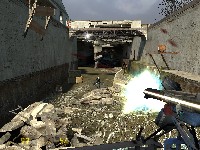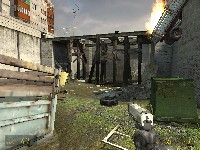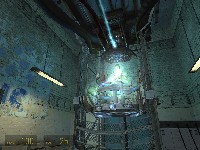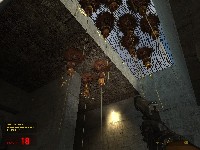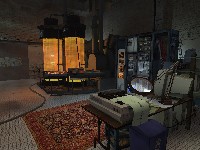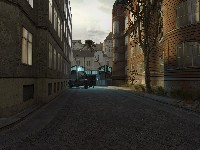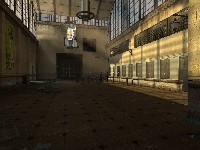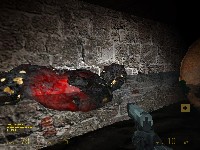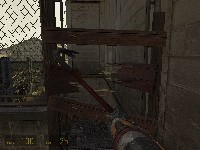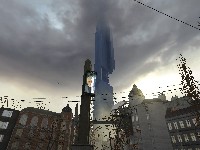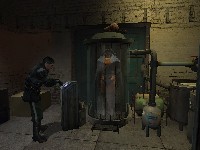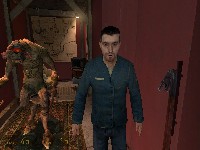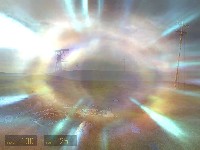Genre: First-person Shooter
Publisher: Vivendi Universal
Developer: Valve Software
Release Date: November 16, 2004
Buy 'HALF-LIFE 2': PC
Over six years ago, the then-unknown developer Valve Software released their first title as a game development studio; Half-Life. The odds that a game redefines its genre are low, the odds that a studio's first game release does the same even lower, and thusly no one could have possibly predicted at the time how much of an impact that Half-Life would have in the first-person shooter genre. To this date, Half-Life has had hundreds of mods developed for it by the community such as Counter-Strike, Day of Defeat, Natural Selection, and Action Half-Life, totaling an average of thousands of servers and tens of thousands of players at any given moment. With the way the plot of Half-Life ended, a sequel has always been expected, though with the combination of the sheer power that was the original title and the drama that made Half-Life 2’s development cycle (See “Code Theft,”“VU – Valve Lawsuit,”“9/30/2003”), the expectation and hype surrounding Half-Life 2 was an incredible force. With the way Half-Life redefined the FPS genre in 1998, all eyes are on its sequel to do the same thing. While Half-Life 2 doesn’t take the genre into brand new territory, it is by far one of the most cohesive, addictive, and high-quality video game titles to be released in years.
(Warning: This paragraph details some major plot aspects of the original Half-Life. Only read if you have beaten Half-Life, or simply don’t care.) In the original Half-Life, scientist Dr. Gordon Freeman worked as a new employee in the secret governmental Black Mesa research facility. The biggest project at Black Mesa was the study of strange crystals brought back from the Xen dimensional border world. Gordon happened to have the luck to be right at ground zero when the purest crystal yet was analyzed; causing a dimensional tear that allowed the creatures from Xen to teleport into the Black Mesa facility. As Gordon fought his way out of the facility, he not only had to deal with the various Xen creatures such as “Slaves” and the “lovable” head crabs but also with military forces ordered to “silence” the incident by any means necessary, and a mysterious figure in a blue suit known as the G-man who seemed to be constantly observing Gordon from a distance throughout the ordeal. Eventually, Gordon himself teleported to Xen and killed the alien leader Nihilanth, after which the G-man also teleported to Xen to mysteriously offer Gordon employment.
However, the plot of Half-Life 2 doesn’t pick up there and starts off just as mysteriously as the first game ended. Gordon “wakes up” aboard a train bound for City 17. City 17 is what looks to be a west Russian city, only surrounded by impenetrable walls and overseen by one Dr. Breene, who is constantly seen on vid-screens and heard spouting propaganda meant to lull the city's inhabitants into complacency. Dr. Breene is the operator of the Citadel, a gigantic tower that instills fear in the citizens. Policing this city is the Combine, a group of ruthless and violent masked soldiers, and rebelling against the Citadel and the Combine are a rag-tag bunch of militants who want nothing more than to break down the tower of the Citadel and the walls surrounding the city to let the citizens learn the truth.
The two strongest points of Half-Life 2 are that of the plot and of the immersion factor. Half-Life 2’s storyline doesn’t have much in the way of in-your-face plot twists in favor of many subtle revelations that really make you think and add significantly to the plot, such as reading a bunch of news clippings on a board in a lab or listening to some of Dr. Breene’s transmissions (And yes, for those who have the game, those are hints for you to look deeper). Dialog between characters is done with a strong sense of realism and builds genuine relationships between them, giving one hope that the days of dry, predictable characters might be finally coming to a close. As Gordon makes his way through his rip-roar adventure through City 17, you can expect to meet quite a few old friends from Black Mesa as well as a bunch of new characters. The first time you meet Barney, the heroic and slightly sarcastic security guard of Black Mesa, you’ll likely wet yourself in geekish glee, just as you will with the other old characters that have been brought back, new and improved for the sequel.
As for the immersion, Half-Life 2 is one of the deepest games yet. Starting off in City 17, you are surrounded by characters in various emotions and situations, all of them wondering why they are in City 17 and why they are not allowed to leave. You can almost feel the despair in the city as people live in apartments where the Combine are free to bust in and beat on the occupants, and do so rather often. A big boost to the immersion factor is that the viewpoint never leaves the first-person perspective; from waking up on the train to when the end credits roll, you are always viewing the world through Gordon’s eyes. Gordon never speaks, completing the feeling that you are actually in this world and that these characters are actually relying on you, rather than on an individual that you merely control.
The term “Physics Engine” has almost became a marketing phrase in video games as of late, with many developers seemingly throwing physics into the game so that they can put it on the features list rather than actually using it creatively. However, Valve seems to have really thought about how their physics engine should be used in the game, using it both as a boost to the game's coolness factor and a main point of the gameplay. For instance, every time you kill an enemy, his body will realistically flop down steps, over rails, etc., but that is almost expected with physics engines now. Physics really takes a front seat when you use the innovative Gravity Gun, which allows the easy manipulation of objects. As the E3 demo shows, you can easily rip a radiator off of a wall inside a building, use it as a shield to block bullets as you advance forward, and then propel it at the guy shooting you to slam him backwards. Enemies are advancing, you say? Arrange a couple of barrels, boxes, or couches as cover to block windows, or better yet, to barricade the door and block the enemy entirely. From there, you can simply get creative with it, using flammable barrels and flinging them as improvised explosives into a group of enemies, utilize any solid object you can find as a means of attack, or simply flinging a can of paint against a wall to watch it splatter.
Gordon has mostly the same armaments as he had available to him in Black Mesa, with some notable exceptions. It isn’t long before Gordon again dons his trusty HEV suit and wields his trademark crowbar to bust some crates and skulls, and along the adventure, he’ll find familiar fan-favorites such as the .357 Magnum, the SMG with attached grenade launcher, and the sniper-licious crossbow, which now fires what looks to be red-hot rebar. New weapons include the Combine pulse rifle, which whittles down enemies with its primary fire and sends them to another dimension with its second and the “bug bait” gland, which allows you to control the fierce ant-lions. Gordon will also have two vehicles available for use in parts of the game, the airboat and the buggy. Despite its lengthiness, the airboat sequence is one of the most memorable action sequences ever coded and has the player avoiding mines and gunfire from aircraft, ground fire from Combine soldiers on the docks, and obstacles in the water itself, which are usually ramped over in dramatic fashion. The buggy sequence isn’t quite as action-packed but is equally as memorable, using the buggy’s turbo boost to blast over ramps and through plate glass windows and smashing through ant-lions and then watching as their orange goo begins to paint the front of the buggy.
One thing that Half-Life 2’s Source engine does really well is present its visuals in a way that is simultaneously easy on the eyes and on the hardware, though obviously a high-end PC will be the better choice if Half-Life 2 is to be run full bore. Comparisons between the level of detail seen in Doom 3 and Half-Life 2 would be valid, as much of the beauty of both games lies in the small things and in the effects moreso than the quality of the textures themselves. However, while Doom 3's graphics were always cast in dim lighting to fit the mood, Half-Life 2 runs the gamut between bright outdoor environments, low lighting in underground tunnels, and the middle ground where a fire at the bottom in a stairwell only barely provides enough light to illuminate the stairs two stories up. The character models and animations are so good that I would like to lay it out plainly and say that they are the absolute best looking and acting characters that I have ever seen in a video game, period. Every character has a wide array of facial expressions which are incredibly realistic, such as the shock and surprise on the scientist’s faces when they meet their old friend, the way Alex sarcastically rolls her eyes, or the way Barney seems to always have a sarcastic smirk on his face. The Combine soldiers look the part of a technologically advanced fighting unit, and other enemies, from the various zombies you will face down to the head crabs themselves, all not only serve as an example of the power of the Source engine but also look just like fans of Half-Life would expect them. The lighting engine isn’t the best one to be seen, but it is also far from the worst, a statement that is quickly solidified when you see how a shadow drapes itself onto a character, how a gunfight lights up a dark room, and how metal objects have a beautiful sheen as they move.
However, Half-Life 2 isn’t quite as impressive in its sound engine’s capabilities. All of the weapons' sound effects really make it feel like you are shooting a powerful death-dealer rather than a dime store pop-gun, and the sounds of battle just simply wouldn’t be complete without that of nicely done ricochet sound effects and the odd explosive whoomph as a barrel full of flammable liquid combusts. The same voice actors who did the major characters in the first game are back, as well as some newcomers to the series for the new characters, and both groups have done some excellent work and really serve to give their characters that final piece of realism and credibility. The audio engine makes extensive use of occlusion and reverb effects to make it actually sound like a battle is waging outside of a building rather than just faking it by reducing the volume when you scramble indoors. However, the music in game is largely uninspired, a shame made even more so by how little music there is in the game. Music is limited mainly to ambient themes played during particularly stressful points in the game, with a couple of exceptions where fast-paced aggressive themes are played during a no-holds-barred action sequence. While the mostly techno music does fit the theme in a sense, it must be said that there is a certain amount of techno that is too much.
Few people play the original Half-Life’s stock multiplayer any more in favor of the multitude of quality mods developed for the title by dedicated groups of Half-Life enthusiasts. When Valve announced that Half-Life 2 itself wouldn’t have a multiplayer mode, many people cringed, fearing all was lost, until they read the next part of the sentence that stated that Counter-Strike: Source would be the official multiplayer component of Half-Life 2. Counter-Strike: Source is, in a nutshell, what you would get if you took the insanely-popular mod Counter-Strike and fully remade it using the power and physics of the Source engine. Many of the popular maps have been remade, such as de_dust, cs_office, and de_cbble, with others sure to follow alongside a slew of community-made maps. The gameplay between Counter-Strike and CS: Source remains largely the same, with a few tweaks to weapon balance here and there, but is enriched with the physics engine since you can now finally shoot a CT with a pump-action shotgun and watch him flop realistically against that desk, not to mention the new visuals, which make the original CS look quite aged in comparison.
 All in all, there are games that suck, there are games that are great, and then there are those select few titles that redefine their genre and stand as one of its high points. Half-Life 2 doesn’t have any radically new technology under its hood, but every bit of it is as polished as the floor of a palace. It took six years for the sequel to what many consider to be the finest first-person shooter ever coded to finally be released, and it has emerged to be exactly the sequel that fans of the series had been hoping for. The original Half-Life won more than 30 Game of the Year awards and raised the bar in terms of what a good game should be, and now Valve’s Half-Life 2, only the second game the studio has ever released, once again looks to be not only a lock for Game of the Year but also as the yardstick against which future first-person shooters will be compared for years to come.
All in all, there are games that suck, there are games that are great, and then there are those select few titles that redefine their genre and stand as one of its high points. Half-Life 2 doesn’t have any radically new technology under its hood, but every bit of it is as polished as the floor of a palace. It took six years for the sequel to what many consider to be the finest first-person shooter ever coded to finally be released, and it has emerged to be exactly the sequel that fans of the series had been hoping for. The original Half-Life won more than 30 Game of the Year awards and raised the bar in terms of what a good game should be, and now Valve’s Half-Life 2, only the second game the studio has ever released, once again looks to be not only a lock for Game of the Year but also as the yardstick against which future first-person shooters will be compared for years to come.
Score : 9.7/10
More articles about Half-Life 2










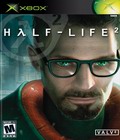 In Half-Life 2 you again pick up the crowbar of research scientist Gordon Freeman, who finds himself on an alien-infested Earth being picked to the bone, its resources depleted, its populace dwindling.
In Half-Life 2 you again pick up the crowbar of research scientist Gordon Freeman, who finds himself on an alien-infested Earth being picked to the bone, its resources depleted, its populace dwindling.










